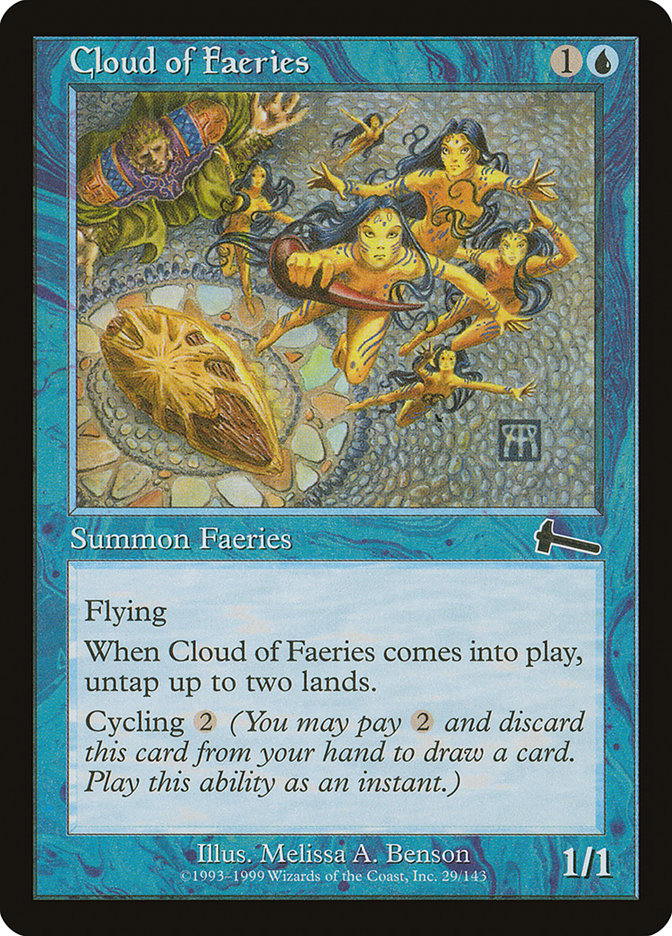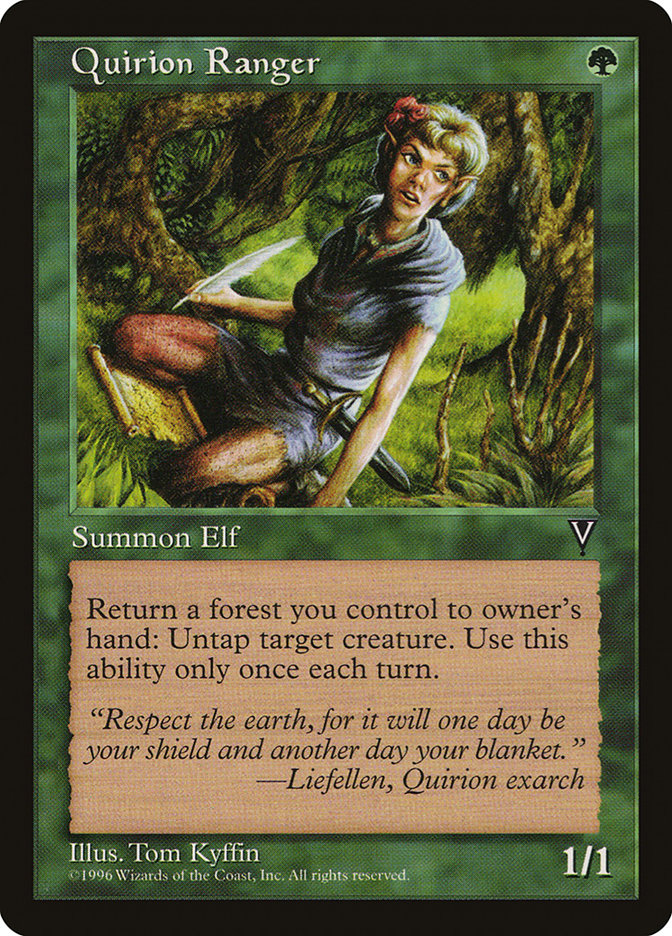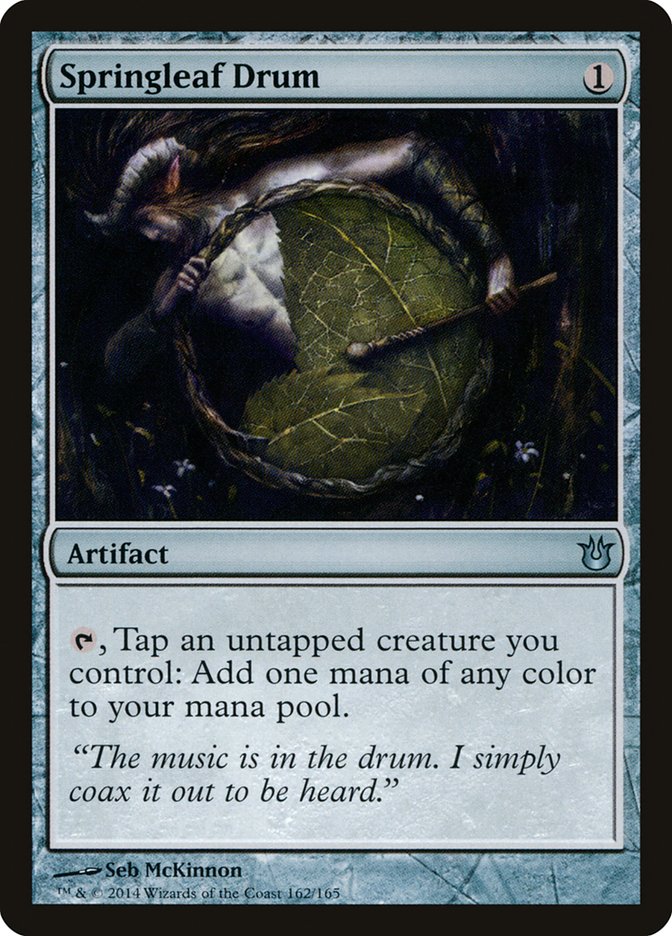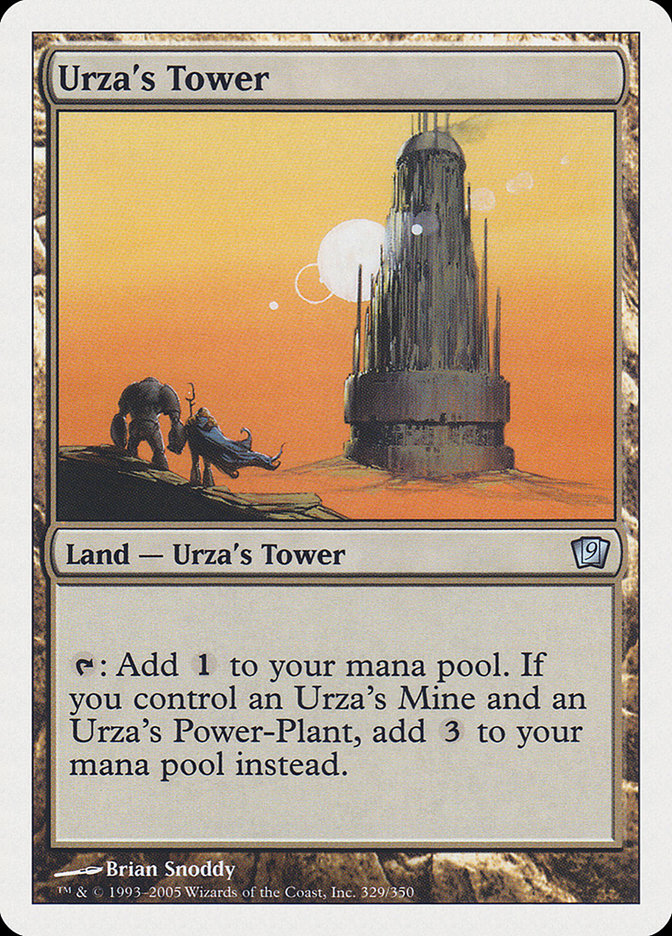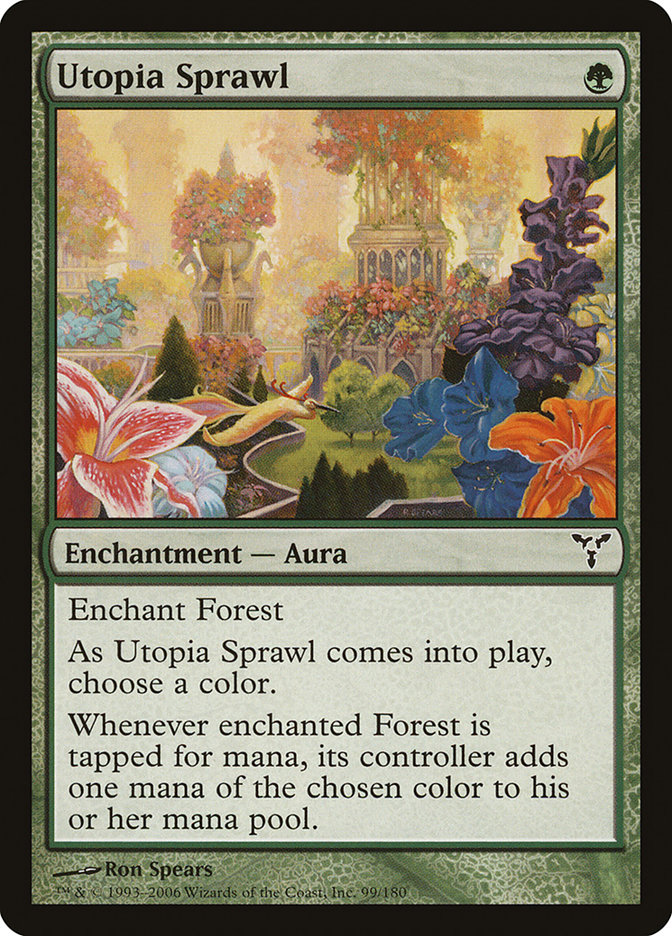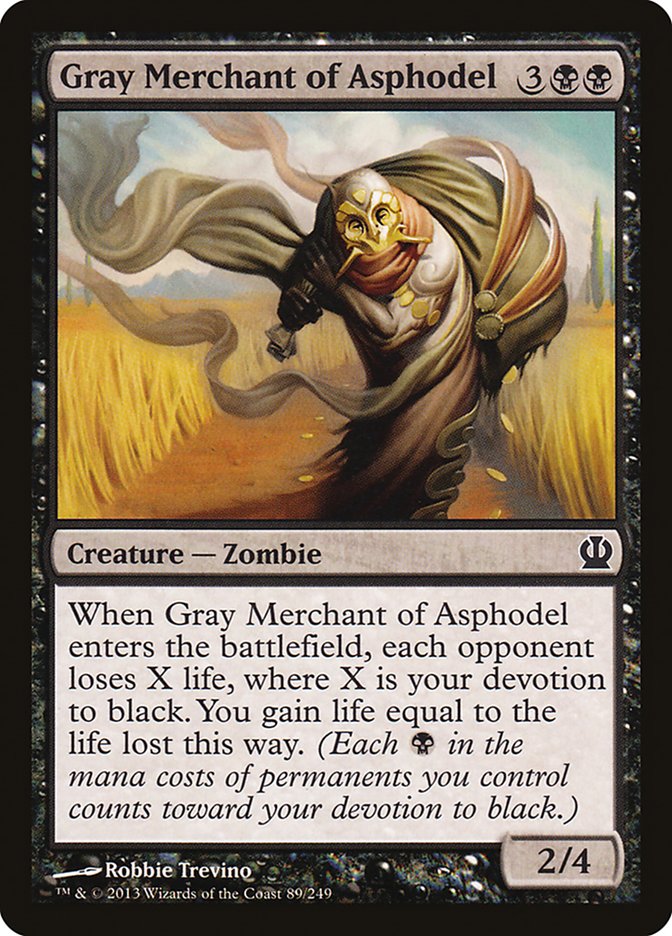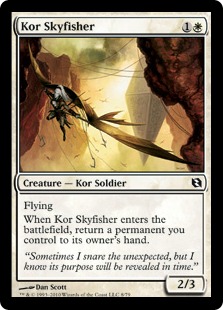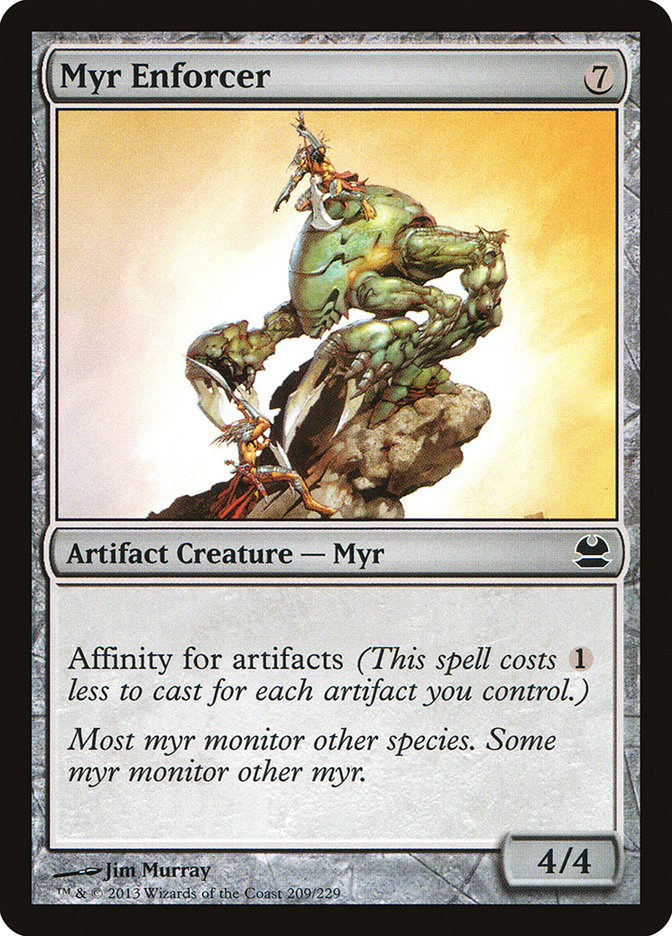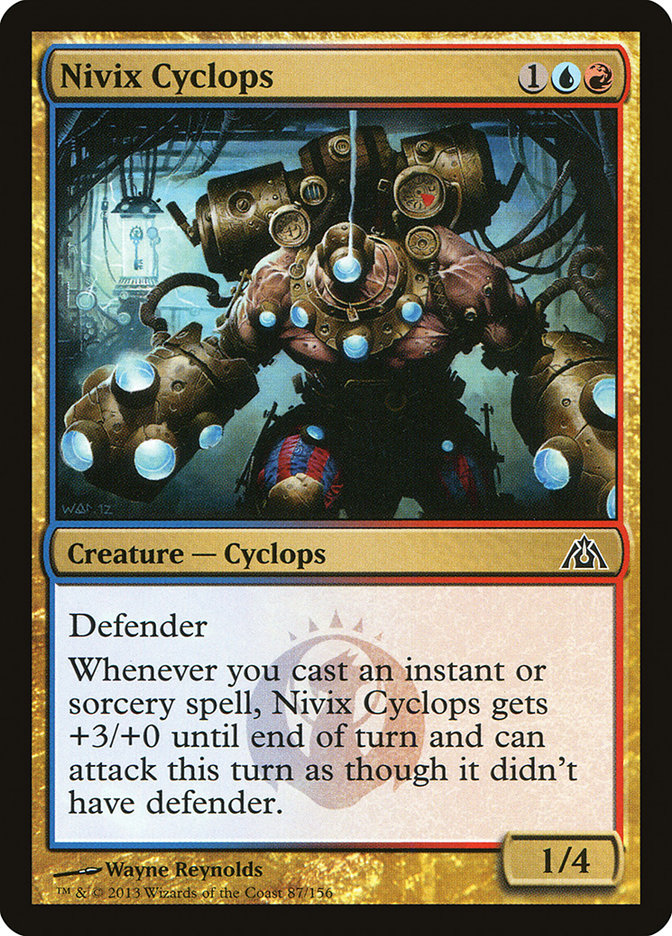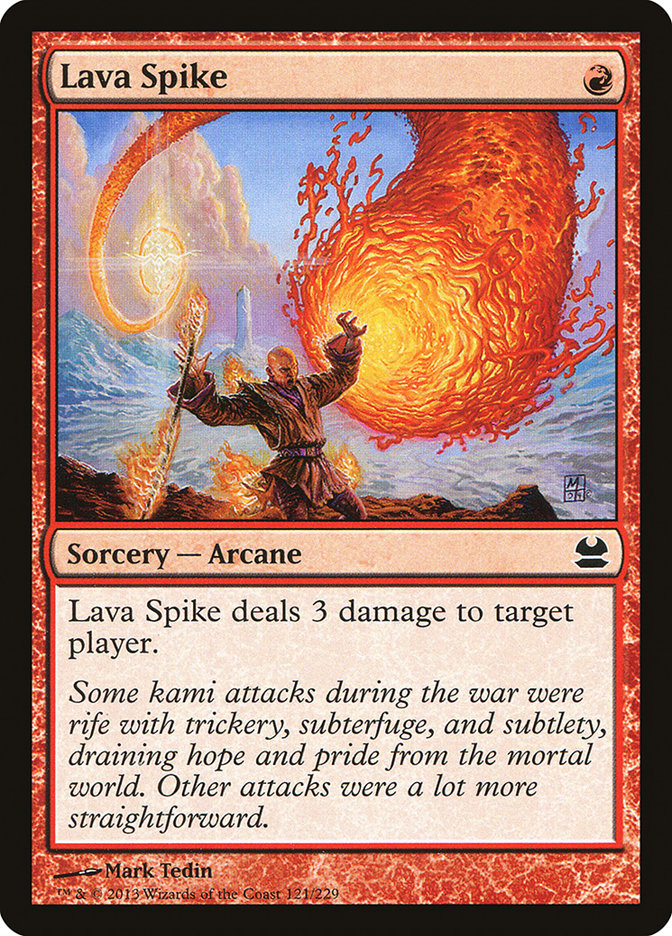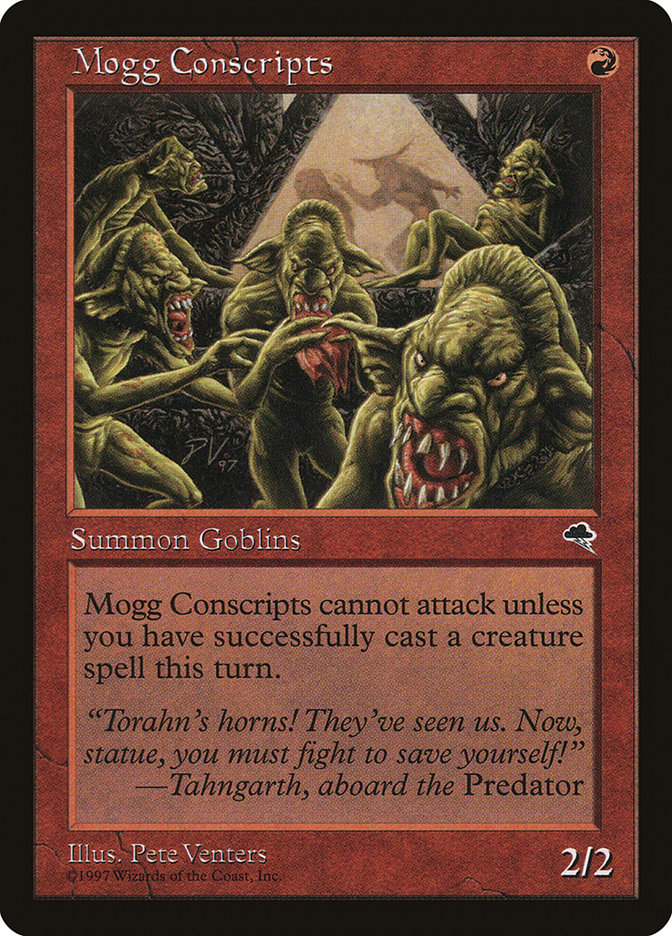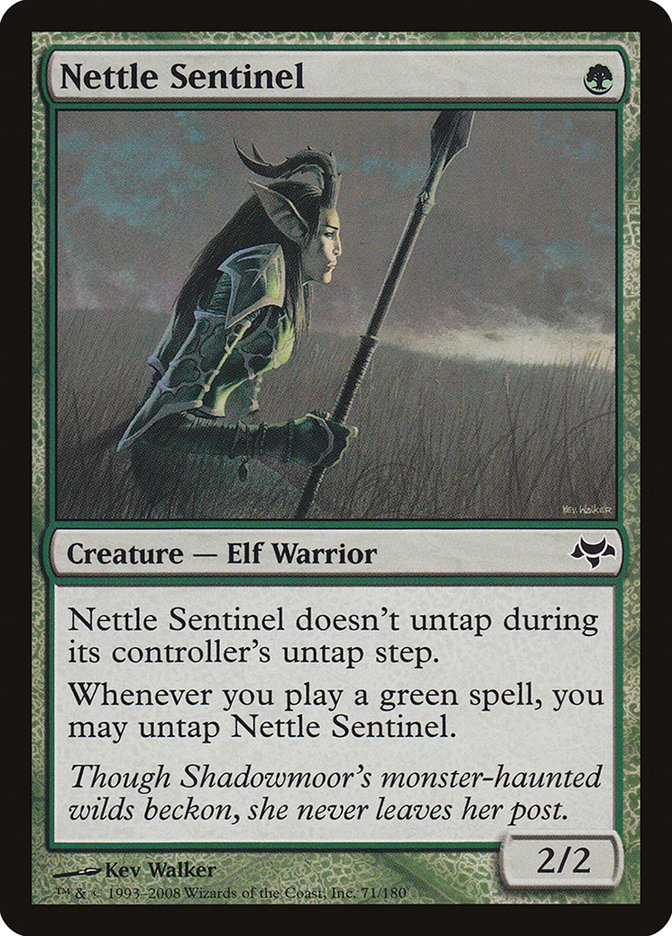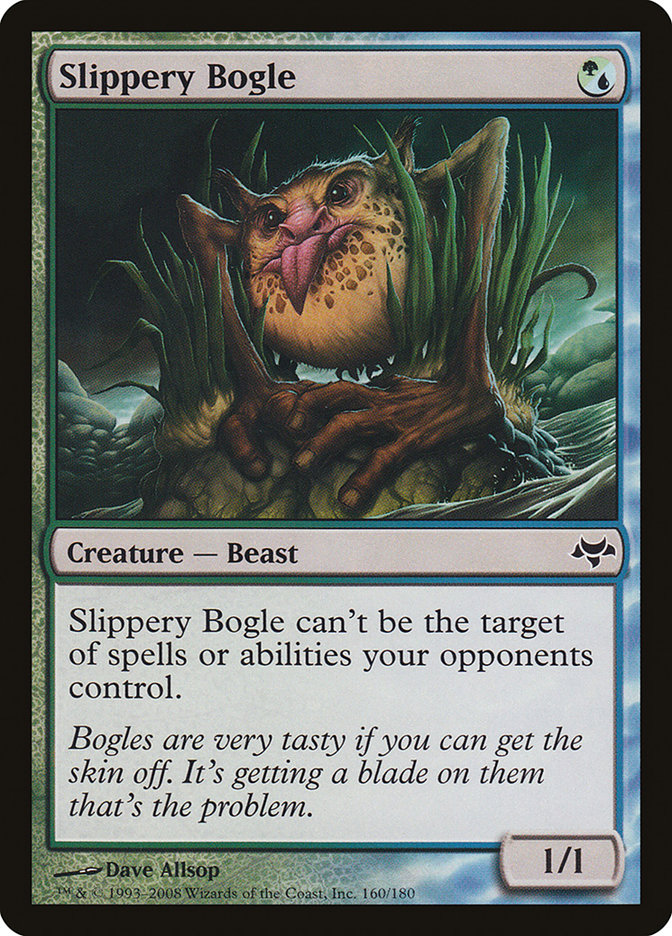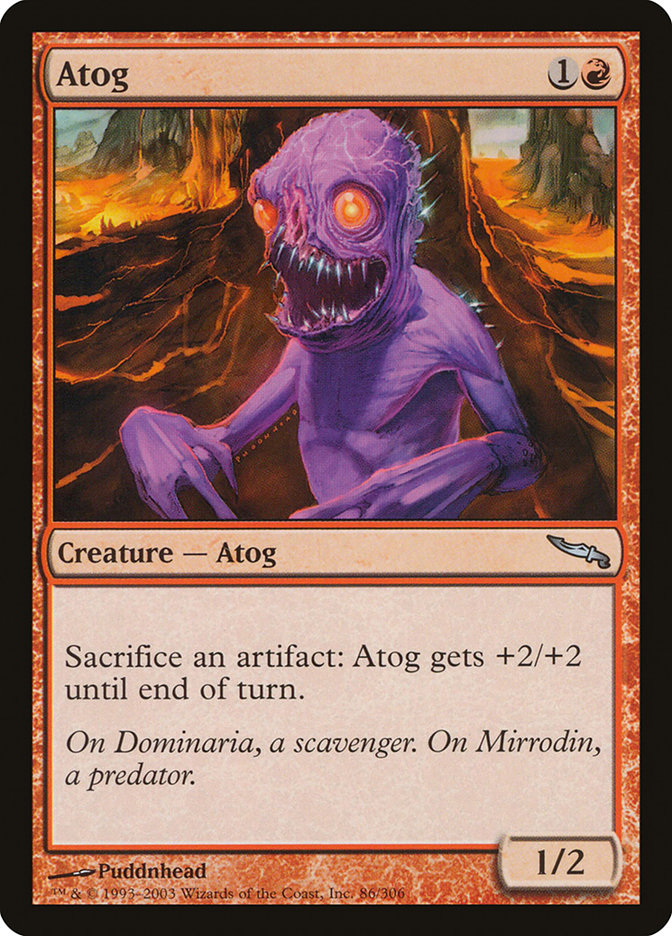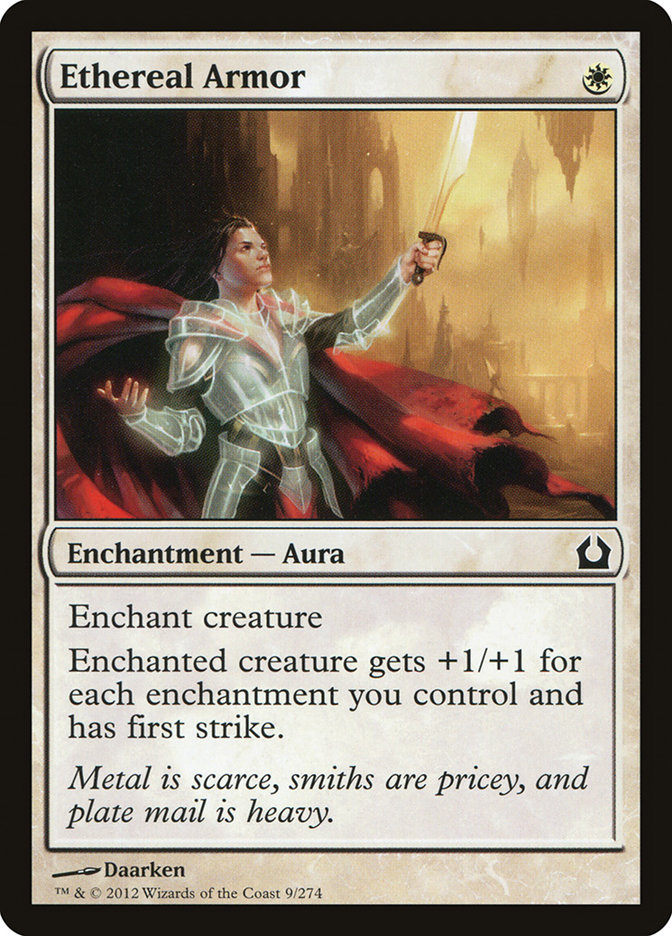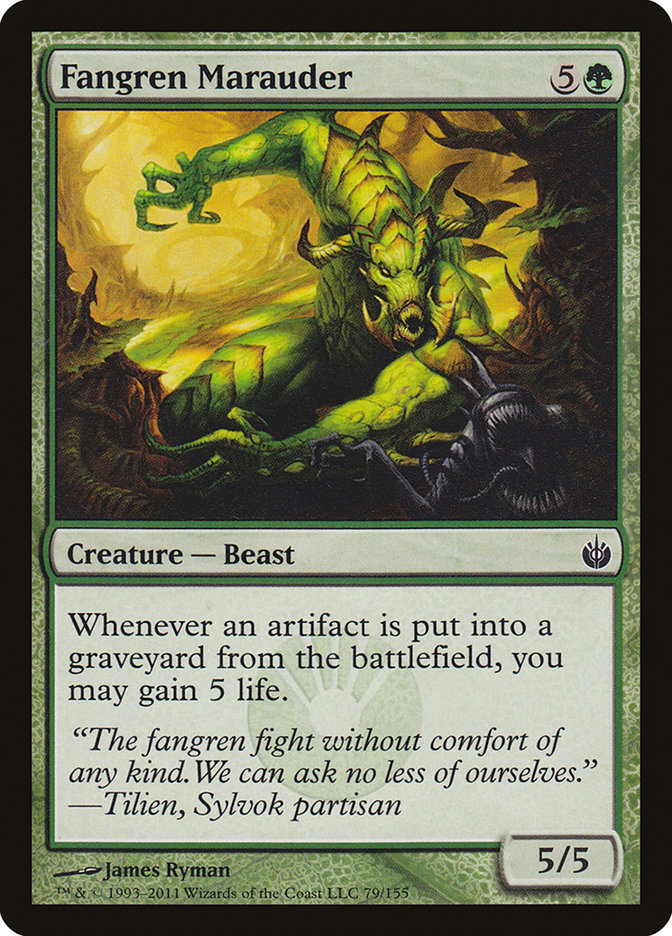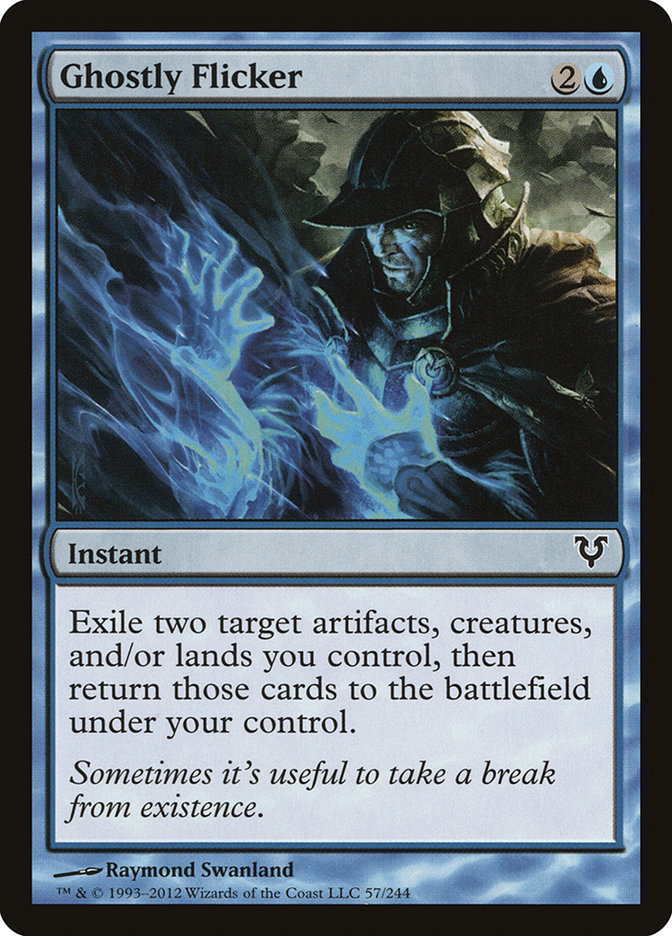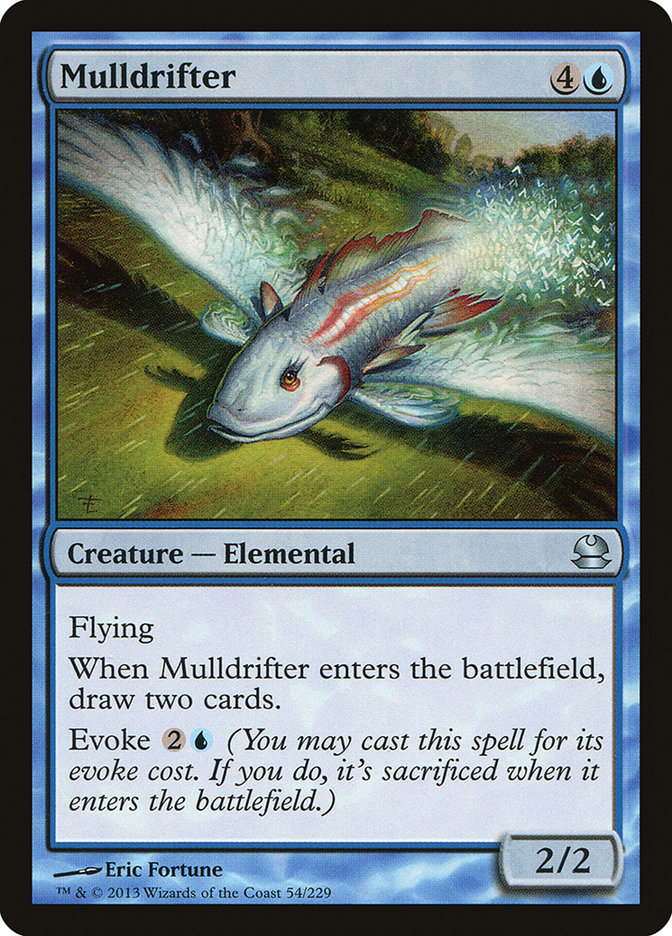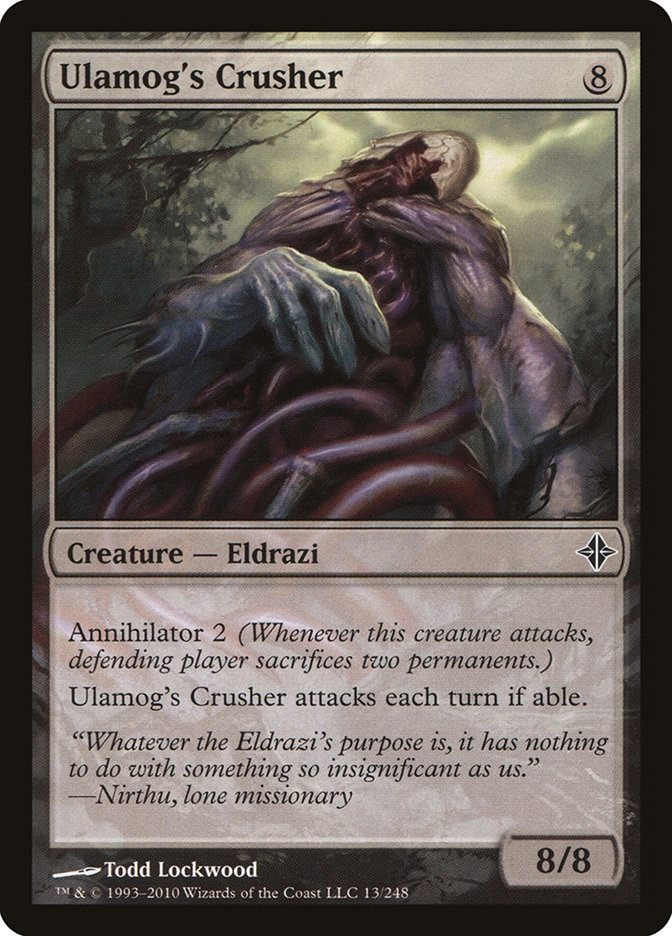Long live Pauper!
First of all, I think that linking you to the inspiration for this article makes a whole lot of sense:
Patrick Chapin’s Next Level Deckbuilding Seminar At Grand Prix Richmond
Today we’re going to look at some of the ideas and questions presented in Part 1 of Chapin’s seminar and place them into a Pauper context. For format veterans, much of this information may seem obvious, but it’s never a bad idea to revisit certain concepts or go even deeper. If you’re somewhat new to Classic Pauper, I hope this article will help feel more comfortable with the format and teach you a thing or two about how well you and your deck are positioned!
Keys To The Format
One of the necessary conclusions to reach about any format (as explained by Chapin) involves what cards, interactions and strategies are absolutely key. So what’s going on in Classic Pauper right now that’s unmistakably definitive, ubiquitous, and (for lack of a better term) key to the format’s identity?
I’m pretty sure you’re looking at it.
Delver of Secrets (and secondarily Counterspell) is everywhere and for good reason. For starters, it has practically unrivaled stats for a creature in this format (let alone a blue one!). As a parallel, look at the impact that Wild Nacatl, another three-power one-drop, is having on the Modern environment. It exists as a benchmark for aggressive strategies and informs what point removal and board sweepers see play (Anger of the Gods over Pyroclasm for instance). Delver does this and more. Whereas Wild Nacatl synergizes with the versatile Zendikar fetch land plus Ravnica shock land mana bases of Modern, Delver synergizes with some of the best card manipulation and permission spells in Pauper.
Additionally, Nacatl and Delver are both in the right colors for their respective formats. While Nacatl gets followed up by Modern staples like Scavenging Ooze and Tarmogoyf, Delver is often seen powwowing with Ponder, Preordain, Cloud of Faeries, and Counterspell.
Let’s look briefly at all the ways a card like Counterspell interacts favorably with Delver of Secrets. First and foremost, it can be revealed on top of its wielder’s library to flip Delver into Insectile Aberration. Secondly, it can be held up on turn 2 to rob the opponent of tempo while Delver is hitting them. Aside from being a catchall answer to the various game plans that exist due to Pauper’s vast card pool, Counterspell also just protects Delver by keeping it on the table. Hence Pauper ends up with a signature deck based around one-mana Delver of Secrets, two-mana Spire Golem, and zero-mana Cloud of Faeries backed by various two-mana permission spells.
Creatures (24)
- 4 Ninja of the Deep Hours
- 4 Cloud of Faeries
- 4 Spire Golem
- 4 Spellstutter Sprite
- 4 Delver of Secrets
- 2 Frostburn Weird
- 2 Cloudfin Raptor
Lands (16)
- 16 Island
Spells (20)
Sideboard

The Mono-Blue Delver deck exemplifies some of Pauper’s definitive components, including what I referred to last month as powerful deck attributes. To reiterate, three of the most powerful deck attributes in Classic Pauper are repurchasing, evasion, and frugality. In Mono-Blue Delver, value creatures are repurchased with Ninja of the Deep Hours and Snap, while the deck as a whole boasts eighteen creatures that fly and free threats in the form of Cloud of Faeries and Spire Golem (other lists also utilize the "free" spells Daze and Gush).
Delver furthermore represents a notable characteristic of the format in that it has an extremely low land count and is comprised of mostly high-impact one- and two-mana spells. You’ll notice in Pauper that most decks not following this trend will likely be finding ways to "cheat" on mana in order to cast their expensive stuff.
It’s important to know a cheater when you see one!
The Faces Of Delver
Two deck concepts that are important to understand and that play a huge part in the metagame are extreme turn 1 pressure and dominant endgames (I’ll be exploring these concepts later in the article). Delver of Secrets actually supplements both of these, making it an effective card in a wide spectrum of decks.
While Mono-Blue Delver is often referred to as aggro-control (with some lists leaning more toward one genre or the other), Delver of Secrets also shows up in pure control and aggro-combo. Case in point:
Spells (30)

Here we see a Delver of Secrets shell that answers Chapin’s question of "am I trying to be faster or bigger?" by choosing the latter option. And while that may seem strange considering it has access to 3/2 flying attackers on turn 2, it’s not the only Delver deck playing for the late game.
Creatures (11)
Lands (23)
Spells (26)
- 4 Counterspell
- 4 Exclude
- 2 Electrostatic Bolt
- 4 Firebolt
- 3 Compulsive Research
- 1 Oona's Grace
- 4 Flame Slash
- 4 Preordain
Sideboard

This deck seeks to outperform other Delver strategies in a very specific way. As I imagine Chapin would attest to, Izzet Control is able to conquer an opposing Delver of Secrets because it can "solve the problem just as efficiently as they presented it." One-mana Delver of Secrets and two-mana Spire Golem are dispatched with one-mana removal spells (that just so happen to match up favorably with a large portion of the format).
It may come as a surprise to the Pauper uninitiated that Lightning Bolt appears nowhere in this deck’s 75. How can that be since it’s one of the most powerful signature spells in Modern (heck, ever printed really)? As it turns out, creatures in Pauper are held to a different standard. Four is the new three! As Alex Ullman explained last week, "Flame Slash defines removal." It’s something I stressed just over a year ago when I "invented" the Flame Slash test, and it still certainly holds true.
Each of the following cards could be considered a lynchpin of at least one Classic Pauper deck. What do they have in common? They all can be solved with the simple gesture of tapping for R!
Some of Flame Slash’s most wanted!
On the aggro-combo side of things, we see Delver of Secrets teamed up with The Scott Summers of Pauper, Nivix Cyclops. The result is a deck that potentially kills on turn 3 or 4 but suffers from being far less consistent than other Delver variants.
Creatures (12)
Lands (17)
Spells (31)
- 4 Lightning Bolt
- 2 Shadow Rift
- 4 Ponder
- 2 Dispel
- 4 Preordain
- 3 Assault Strobe
- 4 Apostle's Blessing
- 4 Gitaxian Probe
- 1 Faithless Looting
- 3 Artful Dodge
Sideboard

Since writing about this strategy in January, my opinion of it has dropped significantly for one simple reason—I’ve actually had the chance to play it. The fact that it doesn’t interact well with most opponents (aside from casting a Shelter to blank one of their removal spells) is a problem, and I just can’t look at its mana base without feeling a migraine coming on. Regardless, Izzet Fiend achieves some of the fastest kills in the format, which should be kept in mind when building or tuning for the metagame.
Despite what it might look like, Pauper is far from "The Delver of Secrets Show," which I hope I can demonstrate with the two following concepts.
Extreme Turn 1 Pressure
Chapin advises us to ask of a Constructed environment "what are the fastest decks in the format?" and "what are the questions that need to be answered?" My response when it comes to Pauper relates to strategies that specialize in presenting extreme turn 1 pressure. Okay, so what does that mean? Extreme Turn 1 pressure is the streamlined initiation of a game plan that will not only kill us if it isn’t disrupted or outraced but can also escalate drastically as early as turn 2.
An obvious example of this is turn 1 Delver of Secrets, turn 2 flip, possibly followed up by multiple Cloud of Faeries and permission mana. There’s also turn 1 Nettle Sentinel out of Mono-Green Stompy, enchanted with Rancor on turn 2 and followed by Skarrgan Pit-Skulk. How about turn 1 Slippery Bogle from the Hexproof deck with an Ethereal Armor thrown on for good measure? Even Mono-Red Burn can start off with a turn 1 Lava Spike variant and a couple more on turn 2 (nearly halving our life total).
The following cards in my opinion often connote extreme turn 1 pressure in Pauper:
It’s very important to have a plan for dealing with this kind of aggression since merely ignoring it is usually not an option. Referring back to one of Chapin’s seminar questions, "am I trying to be faster or bigger?" I assume you all know what being faster means, but being bigger is a little trickier. Essentially you are okay with having a slower plan as long as you can trump the faster strategies with something that is ultimately more powerful. This leads us to the second concept.
Dominant Endgames
Dominant endgames are usually a function of control decks but can also be found in decks like Affinity, Elves, and even Hexproof. In his seminar, Chapin advocated the identification of "the most powerful endgames in the format," and in the case of Classic Pauper, it usually doesn’t get much bigger than Urzatron!
As one of the format’s big mana strategies, Urzatron features the endgame of Mulldrifter or Fangren Marauder into Ulamog’s Crusher and a massive Rolling Thunder.
Similarly big is the endgame of Affinity, which features Atog paired with Disciple of the Vault or Fling. This works very well as a combo finish in a deck that doesn’t actually need a combo finish to win (since it can also get there with 4/4s in the red zone and Galvanic Blast).
Elves goes pretty big in its own right, crafting ridiculous board states and huge monsters thanks to Timberwatch Elf. Hexproof also knows how to achieve monsterdom, albeit with Ancestral Mask and Ethereal Armor. Having a dominant endgame doesn’t mean you have to use size though. Sometimes it’s as simple as gaining pounds of card advantage with Mulldrifter into Oona’s Grace, cashing in excess lands to rip through our deck and bury the bad guy.
You’ll notice that five mana is a sweet spot for bigger strategies since it’s usually when they start to "turn the corner" by resolving a Mulldrifter (or in the case of Mono-Black Control, a Gray Merchant of Asphodel). This means that killing before the opponent’s turn 5 is important, but it’s sometimes not enough to merely "goldfish" a turn 4 kill. This is because most of the Gray Merchant and Mulldrifter decks can disrupt you with removal or permission.
Here are some of the Pauper format’s signature "go bigger" cards.
My last observation about dominant endgames is that (like extreme turn 1 pressure plans) they are largely creature based. This means that most decks will be expecting creatures and should know how to deal with them. If you can abuse this dynamic by attacking from another angle, you may be able to gain a decent edge.
Final Thoughts
To recap some of the ideas I’ve gone over in this article, here is a list of suggestions I have for those who want to compete in the Pauper arena.
- Identify the keys to the format and have a plan for the various Delver of Secrets strategies.
- Incorporate the powerful deck attributes (repurchasing, evasion, frugality) and profit!
- Play high-impact one- or two-mana spells and find ways to "cheat" on mana when going more expensive.
- Be able to solve problems as efficiently as they’re presented and remember that Flame Slash sets the standard!
- Have a plan to deal with extreme turn 1 pressure as well as dominant endgames. Determine whether you are going to be faster or bigger in a given matchup.
- Don’t try to beat everything! Pick a lane or two and hit the road.
One of the finest conclusions reached by Chapin in his seminar is the fact that choosing a deck you like and sticking with it is paramount. The disparity between tier 1 and tier 2 (and even tier 3) decks is really not that significant, so piloting skill, experience, and deck familiarity will go a long way.
Well, that’s all I’ve got for now!
Your Turn
I’d love to hear what you think of Chapin’s seminar and also what you think of the information presented here. What tips do you have for taking our Pauper success to the next level?
I hope you’ve enjoyed this article. The floor is yours!



